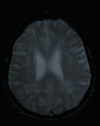Molecular Factors Mediating Neural Cell Plasticity Changes in Dementia Brain Diseases
- PMID: 33854544
- PMCID: PMC8021472
- DOI: 10.1155/2021/8834645
Molecular Factors Mediating Neural Cell Plasticity Changes in Dementia Brain Diseases
Abstract
Neural plasticity-the ability to alter a neuronal response to environmental stimuli-is an important factor in learning and memory. Short-term synaptic plasticity and long-term synaptic plasticity, including long-term potentiation and long-term depression, are the most-characterized models of learning and memory at the molecular and cellular level. These processes are often disrupted by neurodegeneration-induced dementias. Alzheimer's disease (AD) accounts for 50% of cases of dementia. Vascular dementia (VaD), Parkinson's disease dementia (PDD), dementia with Lewy bodies (DLB), and frontotemporal dementia (FTD) constitute much of the remaining cases. While vascular lesions are the principal cause of VaD, neurodegenerative processes have been established as etiological agents of many dementia diseases. Chief among such processes is the deposition of pathological protein aggregates in vivo including β-amyloid deposition in AD, the formation of neurofibrillary tangles in AD and FTD, and the accumulation of Lewy bodies composed of α-synuclein aggregates in DLB and PDD. The main symptoms of dementia are cognitive decline and memory and learning impairment. Nonetheless, accurate diagnoses of neurodegenerative diseases can be difficult due to overlapping clinical symptoms and the diverse locations of cortical lesions. Still, new neuroimaging and molecular biomarkers have improved clinicians' diagnostic capabilities in the context of dementia and may lead to the development of more effective treatments. Both genetic and environmental factors may lead to the aggregation of pathological proteins and altered levels of cytokines, such that can trigger the formation of proinflammatory immunological phenotypes. This cascade of pathological changes provides fertile ground for the development of neural plasticity disorders and dementias. Available pharmacotherapy and disease-modifying therapies currently in clinical trials may modulate synaptic plasticity to mitigate the effects neuropathological changes have on cognitive function, memory, and learning. In this article, we review the neural plasticity changes seen in common neurodegenerative diseases from pathophysiological and clinical points of view and highlight potential molecular targets of disease-modifying therapies.
Copyright © 2021 Wojciech Kozubski et al.
Conflict of interest statement
The authors declare no conflict of interest.
Figures




Similar articles
-
Neuritic alterations and neural system dysfunction in Alzheimer's disease and dementia with Lewy bodies.Neurochem Res. 2003 Nov;28(11):1683-91. doi: 10.1023/a:1026061021946. Neurochem Res. 2003. PMID: 14584822 Review.
-
Neuropathologically mixed Alzheimer's and Lewy body disease: burden of pathological protein aggregates differs between clinical phenotypes.Acta Neuropathol. 2015 May;129(5):729-48. doi: 10.1007/s00401-015-1406-3. Epub 2015 Mar 11. Acta Neuropathol. 2015. PMID: 25758940
-
High discriminatory ability of peripheral and CFSF biomarkers in Lewy body diseases.J Neural Transm (Vienna). 2020 Mar;127(3):311-322. doi: 10.1007/s00702-019-02137-2. Epub 2020 Jan 7. J Neural Transm (Vienna). 2020. PMID: 31912280
-
Dementia with Lewy bodies and Parkinson's disease-dementia: current concepts and controversies.J Neural Transm (Vienna). 2018 Apr;125(4):615-650. doi: 10.1007/s00702-017-1821-9. Epub 2017 Dec 8. J Neural Transm (Vienna). 2018. PMID: 29222591 Review.
-
Cycles of aberrant synaptic sprouting and neurodegeneration in Alzheimer's and dementia with Lewy bodies.Neurochem Res. 2003 Nov;28(11):1743-56. doi: 10.1023/a:1026073324672. Neurochem Res. 2003. PMID: 14584828 Review.
Cited by
-
Selected Biomarkers of Oxidative Stress and Energy Metabolism Disorders in Neurological Diseases.Mol Neurobiol. 2023 Jul;60(7):4132-4149. doi: 10.1007/s12035-023-03329-4. Epub 2023 Apr 11. Mol Neurobiol. 2023. PMID: 37039942 Free PMC article. Review.
-
Alterations of Audiovisual Integration in Alzheimer's Disease.Neurosci Bull. 2023 Dec;39(12):1859-1872. doi: 10.1007/s12264-023-01125-7. Epub 2023 Oct 9. Neurosci Bull. 2023. PMID: 37812301 Free PMC article. Review.
-
Editorial: Advances in understanding synaptic function and its dysfunction in neurological disorders.Front Mol Neurosci. 2023 Jun 29;16:1239315. doi: 10.3389/fnmol.2023.1239315. eCollection 2023. Front Mol Neurosci. 2023. PMID: 37456528 Free PMC article. No abstract available.
-
Alteration in the number of neuronal and non-neuronal cells in mouse models of obesity.Brain Commun. 2023 Mar 21;5(2):fcad059. doi: 10.1093/braincomms/fcad059. eCollection 2023. Brain Commun. 2023. PMID: 37013172 Free PMC article.
-
Mechanisms of cognitive impairment associated with cerebral infarction.Zhong Nan Da Xue Xue Bao Yi Xue Ban. 2024 Oct 28;49(10):1692-1699. doi: 10.11817/j.issn.1672-7347.2024.240213. Zhong Nan Da Xue Xue Bao Yi Xue Ban. 2024. PMID: 40074318 Free PMC article. Review. Chinese, English.
References
Publication types
MeSH terms
Substances
Grants and funding
LinkOut - more resources
Full Text Sources
Other Literature Sources
Medical

